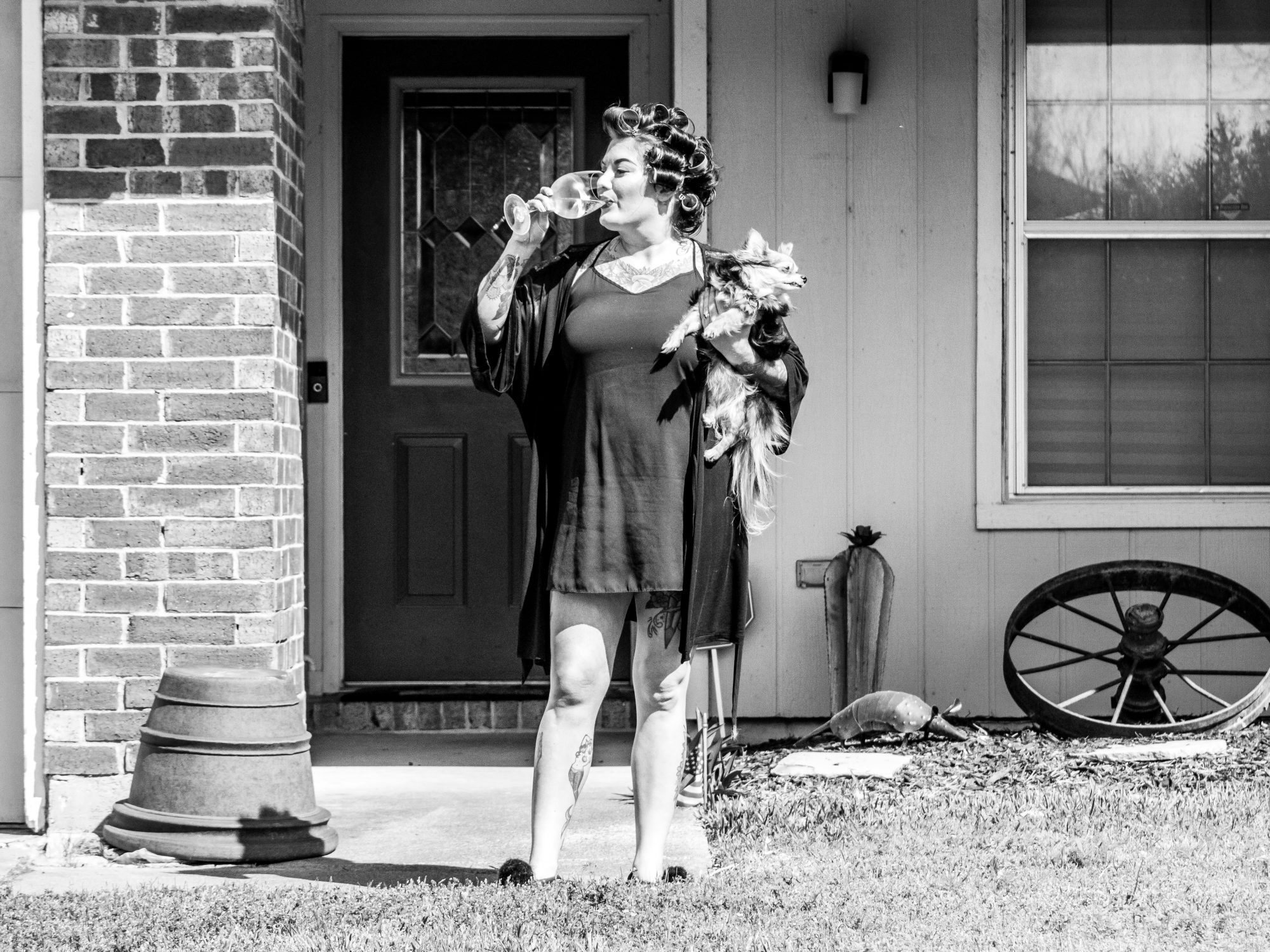
The David & Savannah Lay family. Photo by Tony Drewry
When bars and restaurants began cancelling his gigs last month, Fort Worth musician Tony Drewry put down his banjo and guitar and picked up his camera.
Drewry, the lead singer of Shotgun Friday and a photographer on the side, then fired off an email to friends and acquaintances, letting them know he planned to create a series of “Drive-by Porchraits” of real people. His idea was to photograph people in front of their homes, where they’re biding their time to fight the spread of COVID-19.
On March 25, Drewry tied back his shoulder-length gray hair, climbed into his truck with his yellow rescue lab Lazy Dazy, and set out on a circuit of the homes of those who wanted to participate. Since then, he’s snapped portraits in front of nearly 100 homes.
“I want to capture this time,” Drewry says from his home, where he’s been busy editing photos. “What kind of photographer would I be if I was not documenting?”

For each shoot, Drewry sends a text message in advance to say he’s on his way. He pulls up, rolls down his truck window, and props a monopod on his seat. “It’s like a wildlife photographer on safari, but shooting you in your natural habitat instead of a pride of lions,” he says.
Drewry never gets out of his vehicle, and he stays at least 20 feet from his subjects.
Nobody has to pay for the photo, but he suggests a $5 donation to cover the cost of gasoline. In exchange, the subjects get a copy of a digital image.
Some people have paid Drewry in hard-to-come-by supplies, such as rolls of toilet paper. “One guy even sanitized a six-pack of beer and handed it to me on the end of 6-foot painter’s pole,” Drewry says.
His subjects have run the gamut. One couple posed stoically in front of their home a la “American Gothic;” another wore business clothes above the waist and pajama pants below. Another family dressed as characters from the Disney movie Little Mermaid. One woman posed with her hair done up in old-fashioned rollers, dog in hand. “She said, ‘Give me a few minutes, I gotta put my hair up in curlers and throw on a nightie,’” Drewry recounts.

He’s also photographed kid’s birthdays, engagement photos, and a 2-week-old baby’s first professional “portrait.” One day, he drove 200 miles and made 30 stops.
“What I have noticed is that no matter what’s happening, life is going to continue to go on, and there’s beauty everywhere,” Drewry says.
Drewry, a history buff, drew inspiration for the project from Works Progress Administration photographers who took pictures of regular people during the Great Depression of 1929 to 1933. Some stories, he says, only photographs can tell.
“In the bigger picture, I’d love it if 100 years from now some research team finds this time capsule and the data I’ve collected and is ecstatic that we did this,” he says.

Douglas & Angela TePaa family. Photo by Tony Drewry
When the pandemic ends, Drewry wants to compile the images into a book or gallery exhibit.
“I’m pushing through because I want to see them put together as a set,” he says. “I want to capture this moment in a broad sense, but give it some character, too.”
And as Drewry has discovered, there are plenty of characters willing to play along during these unusual times. Someone just had to ask them.

The Paul & Amber Jackson family. Photo by Tony Drewry








